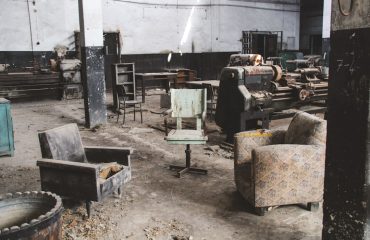The Role of Steel in Earthquake-Resistant Structures
Introduction
Earthquakes are devastating natural disasters that can cause widespread destruction and loss of life. Designing structures that can withstand the immense forces exerted during seismic events is paramount. Steel, with its unique properties, plays a critical role in creating earthquake-resistant structures, ensuring the safety and resilience of buildings and infrastructure in seismically active regions.
Why Steel is Ideal for Earthquake-Resistant Design
Several inherent characteristics of steel make it an exceptional material for earthquake-resistant construction:
- High Strength-to-Weight Ratio: Steel possesses a remarkably high strength-to-weight ratio, meaning it can withstand significant loads while remaining relatively lightweight. This is crucial in seismic design, as lighter structures experience less inertial force during an earthquake.
- Ductility: Steel exhibits excellent ductility, meaning it can deform significantly under stress before fracturing. This allows steel structures to absorb seismic energy through plastic deformation, preventing catastrophic collapse. The structure can bend and sway, dissipating the earthquake’s energy rather than resisting it rigidly.
- Resilience: Steel’s ability to return to its original shape after deformation makes it highly resilient. This means that after an earthquake, a steel structure is more likely to be repairable rather than requiring complete demolition.
- Weldability: Steel’s excellent weldability allows for the creation of complex and interconnected structural systems, optimizing load distribution and energy dissipation during seismic activity.
- Fatigue Resistance: Steel demonstrates good fatigue resistance, meaning it can withstand repeated stress cycles without failure. This is important considering the cyclical nature of ground shaking during an earthquake.
- Recyclability: Steel is a highly recyclable material, contributing to sustainable construction practices and reducing the environmental impact of building and rebuilding after seismic events.
Applications of Steel in Earthquake-Resistant Structures
Steel is employed in various ways to enhance the seismic performance of buildings and infrastructure:
- Steel Frames: Steel moment frames, braced frames, and shear walls form the primary structural system, providing strength and stability against lateral forces. These frames are designed to deform plastically, absorbing energy and preventing collapse.
- Steel Bracing: Diagonal bracing systems, often composed of steel members, are highly effective in resisting lateral loads. These braces provide additional stiffness and strength to the structure, limiting excessive deformation.
- Steel Dampers: Steel dampers are energy dissipation devices that are incorporated into steel structures to reduce the amplitude of vibrations during an earthquake. These dampers absorb seismic energy, minimizing damage to the structure.
- Steel Base Isolation: Base isolation systems use steel bearings and dampers to decouple the structure from the ground, reducing the transmission of seismic forces to the building. This significantly minimizes the impact of ground shaking.
- Steel Connections: The design and detailing of steel connections are crucial for ensuring the overall seismic performance of the structure. Properly designed connections can enhance the ductility and energy dissipation capacity of the frame.
- Steel Shear Walls: Steel shear walls, often constructed using steel plates or sections, provide significant lateral stiffness and strength, improving the overall seismic resistance of the structure.
Seismic Design Considerations for Steel Structures
Designing earthquake-resistant steel structures requires careful consideration of several factors:
- Seismic Zone: The seismic design must account for the specific seismic hazard in the region where the structure is located. Building codes and standards provide guidelines for seismic design based on the seismic zone.
- Soil Conditions: The type of soil on which the structure is founded significantly influences the seismic response. Soil amplification can increase the ground motion, requiring modifications to the structural design.
- Structural Analysis: Sophisticated computer-aided structural analysis techniques are employed to evaluate the seismic performance of the steel structure under various loading scenarios. Nonlinear analysis is often used to capture the inelastic behavior of steel during an earthquake.
- Detailing and Fabrication: Proper detailing and fabrication of steel members and connections are essential to ensure the intended seismic performance. Welding quality and bolt tightening are critical aspects.
- Material Properties: The mechanical properties of steel, such as yield strength and ductility, are crucial input parameters in seismic design. Material testing is conducted to verify the properties of the steel used in the construction.
- Code Compliance: The design must comply with relevant building codes and standards for seismic design, ensuring the safety and resilience of the structure.
Conclusion
Steel’s unique combination of high strength, ductility, and weldability makes it an indispensable material in the construction of earthquake-resistant structures. By employing advanced design techniques and incorporating steel components strategically, engineers can create buildings and infrastructure that can withstand the destructive forces of earthquakes, safeguarding lives and minimizing damage. The continued development and refinement of steel-based seismic design strategies will remain crucial in mitigating the risks associated with seismic activity globally.
Further Reading
For those interested in learning more, here are some resources to explore:
- American Institute of Steel Construction (AISC)
- Structural Engineering Institute (SEI)
- International Code Council (ICC)
“`




